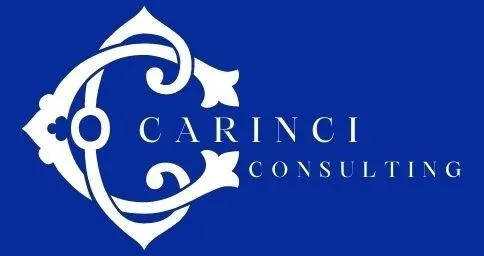
An Introduction to Nonprofit Grant Strategy: Focus on Funding, Not Fumbling
"Strategy is about making choices, trade-offs; it’s about deliberately choosing to be different.” - Michael Porter
Grants are the lifeblood for many nonprofits, but let’s be honest—getting them often feels like a game of darts played in the dark. If you’re tired of “fingers-crossed” approaches that yield inconsistent results, it’s time to build a solid, intentional grant strategy. A great strategy does more than secure funding; it aligns your grant-seeking efforts with your organization’s priorities, ensuring every dollar serves your mission effectively.
Ready to ditch the fumbling and focus on funding? Here’s your ultimate guide to crafting a nonprofit grant strategy that delivers results.
Start with Your Strategic Priorities 🎯
Before you even glance at a grant database, ask yourself: What are your organization’s top priorities? Whether it’s launching a new program, scaling an existing initiative, or addressing a specific community need, your strategy should reflect these goals. Without alignment, you risk chasing grants that stretch your resources or steer your organization off course.
For example, if your nonprofit focuses on youth mentorship, prioritize grants that support education, leadership development, and equity initiatives. By centering your efforts around your mission, you’ll not only improve your chances of success but also maximize the impact of the funding you receive.
Research the Right Opportunities 🔎
Not all grants are created equal, and a one-size-fits-all approach won’t cut it. Take the time to research opportunities that align with your mission, priorities, and capacity. Platforms like Grants.gov for federal grants or Instrumentl for diverse funding sources can save you hours of guesswork.
For example, if you’re a small nonprofit with limited capacity, focus on foundation or local grants with manageable application requirements. On the other hand, larger organizations might benefit from federal grants that fund multi-year initiatives. Matching the opportunity to your capacity ensures that you’re not overextending your team.
Build a Grants Calendar to Stay on Track 📅
Once you’ve identified potential opportunities, it’s time to map out a grants calendar. This tool will keep your team organized and ensure you’re not overwhelmed by overlapping deadlines. Include key dates like LOI (Letter of Intent) deadlines, full proposal due dates, and funder decision timelines.
For example, if three major grants are due in Q2, use your calendar to spread out preparation tasks, allowing enough time for research, writing, and reviews. A well-planned calendar isn’t just a time-saver—it’s a stress reducer.
Strengthen Your Messaging ✍️
Your grant proposal isn’t just a formality; it’s your chance to tell a compelling story. Clearly articulate the problem your organization is addressing, the innovative solutions you’re offering, and the measurable outcomes you plan to achieve. Tailor your messaging to each funder’s priorities, showing them why your work aligns with their goals.
For example, if a foundation prioritizes community impact, include testimonials or case studies that illustrate how your programs have made a tangible difference. A strong narrative backed by data will help your proposal rise to the top.
Build Relationships with Funders 💌
A successful grant strategy isn’t just about applications—it’s about relationships. Reach out to funders before submitting your proposal to introduce your organization and ask clarifying questions about their priorities. After you receive funding (or even if you don’t), maintain communication to build long-term partnerships.
For instance, a simple email thanking the funder for their time or sharing updates on your organization’s impact can set the stage for future opportunities. Funders are more likely to invest in organizations they trust and understand.
Leverage Data to Demonstrate Impact 📈
Grantmakers want to know their dollars are making a difference. Use data to show the impact of your programs and your ability to deliver results. This could include metrics like increased literacy rates, improved health outcomes, or other quantifiable benefits tied to your mission.
For example, if you run a food pantry, include data showing the number of families served, meals provided, and reductions in food insecurity. Visual tools like charts or infographics can make your data even more compelling.
Edit Ruthlessly and Align with Guidelines ✍️
Once your draft is complete, it’s time to refine. Start by ensuring your proposal aligns perfectly with the funder’s guidelines—down to the word count and formatting. Then, review for clarity and conciseness. Every sentence should earn its place by adding value to your story.
A common pitfall is overloading the proposal with jargon or unnecessary details. Instead, focus on painting a clear picture of your project and its impact. If possible, have someone outside your organization review the proposal to ensure it’s easy to understand.
Evaluate and Refine Your Strategy 🤔
A great grant strategy is a living document, not a one-and-done task. Regularly evaluate your successes and challenges, and use those insights to refine your approach. What worked well? What didn’t? Where can you improve?
For example, if you notice a higher success rate with foundation grants compared to federal ones, adjust your focus accordingly. Continuous improvement is the key to long-term success in grant seeking.
Focus on Funding with a Clear Strategy
A nonprofit grant strategy isn’t just a plan—it’s a roadmap to sustainable impact. By aligning your efforts with your mission, researching the right opportunities, and building strong funder relationships, you’ll not only secure more funding but also amplify your organization’s impact.
Ready to transform your grant-seeking efforts?
At Carinci Consulting, we specialize in helping nonprofits craft effective grant strategies that deliver results. Let’s work together to make your funding goals a reality.
🗓️ Schedule a complimentary strategy session.
Have questions? 📨 Email us at jennifer@carinciconsulting.com.
Office: Lexington, SC
Site: www.carinciconsulting.com

Call: 302-383-4724
Email: jennifer@carinciconsulting.com


